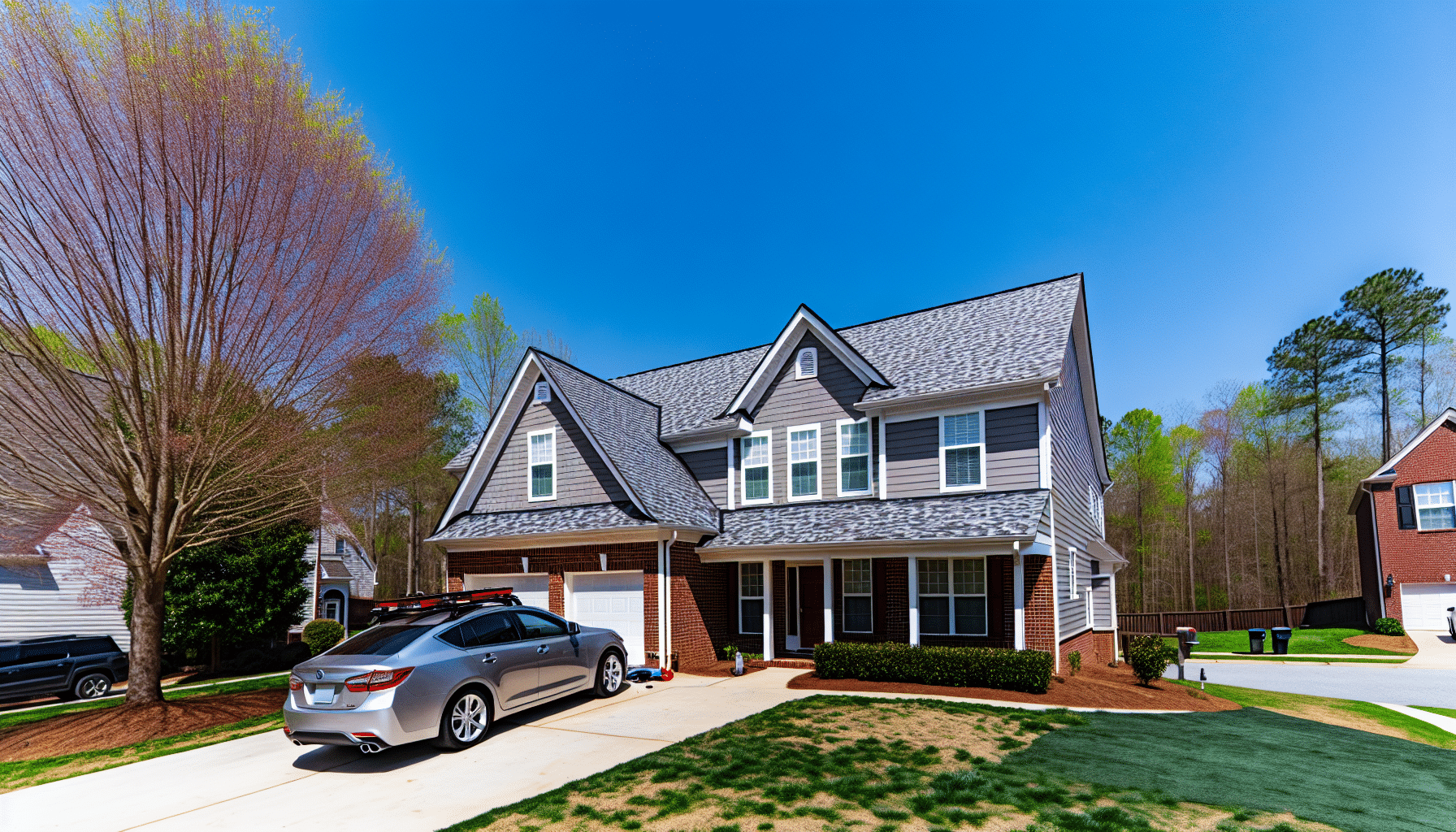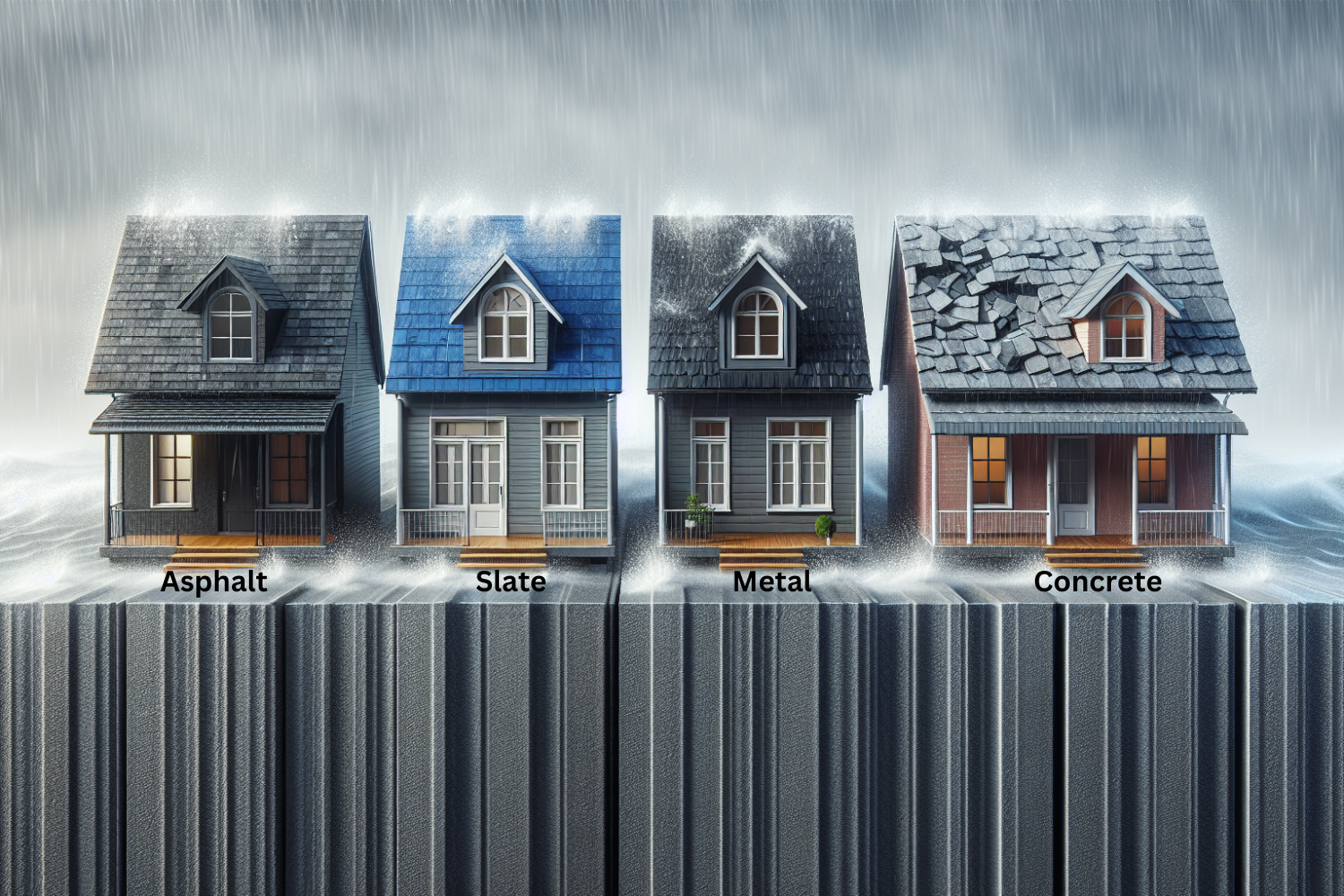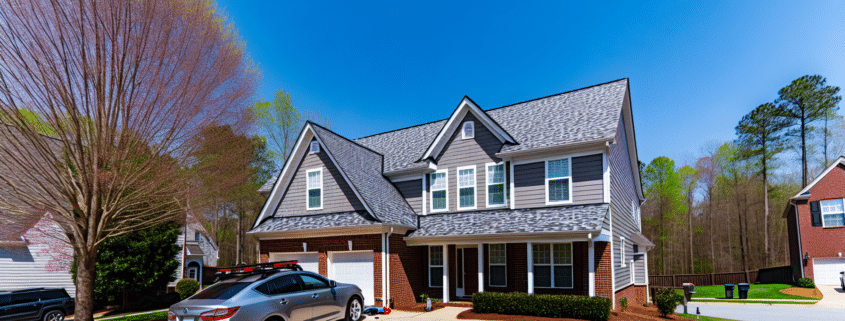Do You Need to Tell Insurance About New Roof? Maximizing Benefits & Coverage
If you’ve recently installed a new roof, you might be asking: do you need to tell insurance about new roof? Absolutely. Informing your insurer could affect your coverage and possibly lower your insurance costs. This article will explore the ins and outs of why updating your policy with this information is essential, without giving away specific details upfront. Stay tuned for insights on the benefits, impacts on premiums, and tips for ensuring you’re fully covered.
Key Takeaways
-
Informing your insurance company about the installation of a new roof can lead to substantial premium discounts, improve risk assessment, and ensure that coverage limits are appropriate for the actual condition of the home.
-
Factors that affect insurance premiums in relation to a new roof include the type of roofing material, the roof’s age, local weather trends, and the geographical location, with more durable materials generally leading to lower premiums.
-
To maximize insurance benefits after getting a new roof, homeowners should select quality materials, hire a reputable contractor, and perform regular maintenance, potentially qualifying them for further insurance discounts and aiding in the claims process.
The Importance of Informing Your Insurance Company About a New Roof

Many homeowners are unaware of the significant benefits that come with updating their insurance company about a new roof. Far from being a mere formality, this crucial step can unlock potential premium discounts and ensure proper coverage for future damages. Imagine receiving substantial cost savings on your home insurance premium simply because you installed a new roof!
Informing your insurance provider about any changes, such as a new roof, ensures your coverage accurately reflects your current home condition. And, in the event of future claims, you won’t have to worry about coverage disputes or unexpected out-of-pocket costs.
The advantages of informing your insurance company about your new roof and home security systems extend beyond just cost savings—they also include securing peace of mind with proper coverage.
Home Insurance Premium Discounts
You might wonder how a new roof can result in lower home insurance rates. The answer lies in the enhanced protection that a new roof brings. More durable roofing materials like metal or tile offer better resistance to fire and weather elements such as hail and rain. This improved protection reduces the risk of damage, leading to a consequent decrease in insurance costs.
Your roof’s lifespan can significantly influence your insurance premiums. Newer roofs are less likely to incur damage, which further reduces insurance costs over time. Additionally, if your roof is certified as impact-resistant, you could be looking at even more savings on your insurance premiums due to the mitigated risk to the insurer.
Ensuring Proper Coverage
While premium discounts are undoubtedly a benefit, maintaining adequate coverage is equally, if not more, crucial. Did you know that insurance companies may decline coverage for roofs over 20 years old due to increased liability? In fact, for some insurers, the roof needs to be 10 years or newer for coverage.
Older roofs are often subject to policy restrictions or exclusions, particularly if they are over a certain age or in disrepair, resulting in increased out-of-pocket costs for homeowners. By updating your home insurance policy to reflect the installation of a new roof, you can prevent such scenarios and guarantee proper coverage for future claims.
Factors Affecting Insurance Premiums After a New Roof Installation

Though a new roof can result in lower insurance premiums, keep in mind that other factors may also affect your insurance costs. For instance, the type of roofing material used can have a direct impact on your insurance costs. From asphalt shingles with an average lifespan of 15 years to metal roofs that can last up to 50 years, the material you choose for your roof matters.
Moreover, local weather trends and the geographical location of your home also play a significant role in adjusting insurance premiums after a new roof installation. Homes located in areas prone to hurricanes or windstorms may have higher insurance premiums due to the increased risk of weather-related damage.
Roofing Materials
Modern and resilient roofing materials such as:
-
asphalt
-
slate
-
metal
-
concrete
-
and even broken shingles in some cases
can affect homeowner’s rates significantly due to their enhanced resistance to fire and water damage. Materials such as concrete or clay tiles and metal roofs have longer average lifespans, which insurers view favorably, thereby positively impacting premiums.
Interestingly, impact-resistant roofs that have certifications may be eligible for an impact resistant roof discount, with some states even offering specific incentives for these types of roofing materials.
In conclusion, the durability, lifespan, and impact resistance of roofing materials play critical roles in determining insurance premiums, with more durable options typically resulting in lower costs.
Roof Age
When it comes to roofs, age matters. Insurance companies factor in a roof’s age when setting premiums and coverage levels. As the roof ages, reaching 10 years and then 20 years, the potential for an increase in insurance premiums and a decrease in coverage exists.
Properties with roofs older than 40 years are typically not eligible for insurance coverage from most carriers. Insurers often have age restrictions on roof coverage. After 20 years, roofs may be insured for their actual cash value rather than the full replacement cost, reflecting a form of limited coverage. Hence, keeping your roof in good condition and replacing it when necessary can significantly influence your insurance coverage and premiums.
Tips for Maximizing Insurance Benefits With a New Roof

Having discussed the importance of notifying your insurance provider about your new roof and the factors influencing your insurance costs, let’s now explore some strategies to maximize your insurance benefits. These insights will not only help you make informed decisions about your roof but also ensure you get the most out of your insurance coverage.
Optimizing your insurance benefits involves strategic decisions, including the selection of high-quality materials, hiring a trustworthy contractor, and conducting regular maintenance. Let’s delve into these points.
Choose Quality Materials
Selecting the right roofing materials can be a game-changer when it comes to insurance benefits. Durable materials with long expected lifespans, such as metal or tile, can lead to lower insurance premiums due to their durability and resistance to damage.
Moreover, a new roof may qualify for the following discounts:
-
Impact-resistant or wind mitigation discounts, potentially saving homeowners on insurance costs
-
Discounts for using storm-resistant or upgraded building materials for roof replacements
-
Roof age discount for installing a new roof, which can lower insurance premiums
-
Additional insurance discounts for energy-efficient roofing materials due to their role in reducing heat gain and damage potential.
Hire a Reputable Contractor
Engaging a certified, licensed, and seasoned roofing contractor is another vital move to maximize your insurance benefits. Such a contractor guarantees:
-
Quality installation
-
High-quality materials at better rates
-
Potential insurance premium savings
-
Fewer claims
Experienced contractors, such as Rapid Roofing, provide comprehensive roofing services, including obtaining proper permits and ensuring full warranty coverage, emphasizing proper assessments for long-term benefits over low costs. It’s crucial to research roofing companies to avoid scammers and ensure that the contractor can deliver on their promises for repair quality and reliability.
Perform Regular Maintenance
Regular maintenance is the key to a long-lasting roof. Annual roof inspections are recommended to promptly address minor issues and avoid costly damages, ensuring the roof remains in the best condition possible.
Well-maintained roofs are less likely to incur damages that lead to claims, potentially contributing to a roof lower in insurance premiums. Keeping detailed records of maintenance, repairs, and inspections can help homeowners demonstrate that any roof damage was sudden and accidental, rather than a result of poor maintenance, aiding in insurance claims.
Showing that you’re taking diligent care of the roof can result in reduced insurance premiums.
Navigating the Insurance Claim Process for Roof Replacement

While the process of filing an insurance claim for a roof replacement might feel overwhelming, armed with the correct knowledge and guidance, you can successfully navigate it. Whether your roof was damaged accidentally or by nature-related events, these incidents are typically covered by insurance, and thus, you should file a claim.
Before placing a claim, it’s advised to read through your insurance policy to ensure roofing damage is covered. Organizing insurance documents and performing inspections can facilitate the claims process and potential reimbursement for roof replacement. Let’s delve into the key steps you need to take to navigate this process effectively.
Documenting Roof Damage
Documenting roof damage is critical when filing an insurance claim. By providing undeniable proof of the extent and the cause of the damage, you strengthen your claim and increase the likelihood of approval.
Start by assessing visible damage from the ground level, then hire a professional inspector who can provide detailed information to the insurance company. Regularly document and report roof damage, using date-stamped photos and written descriptions. This proactive approach can prevent claim denials and ensure coverage.
Working with Your Insurance Agent
Your insurance agent will serve as your ally throughout the claim process. They can:
-
Guide you through the process
-
Clarify coverage details
-
Expedite the process
-
Act as a liaison between you and the insurance company, helping to negotiate the claim and make the process smoother
-
Help determine if the damage is likely to be covered
-
Advise on the necessary steps to file a claim
Understanding Policy Coverage
Understanding your policy coverage is a crucial aspect of the insurance claim process. Knowing the details of your insurance policy, including the deductible, exclusions for materials or roofing types, and coverage options in high-risk areas, is crucial for homeowners.
Review your insurance policy thoroughly to know exactly what events are covered and to understand any specific requirements or exclusions that may apply to roof damage claims. Most homeowners insurance typically provides coverage for roof replacement if the damage is caused by an act of nature or a sudden accidental event, rather than gradual wear and tear or neglect.
Case Study: Rapid Roofing’s Expertise in Insurance Claims

To exemplify the points made in this article, consider Rapid Roofing. This reputable roofing contractor has garnered over 30 years of specialized experience in roof repair, roof replacement, and storm damage repair. Rapid Roofing is renowned for their superior workmanship and customer service, supporting their clients during the insurance claim process.
They take on the role of insurance claims advocates, ensuring clients achieve the best possible outcomes. Rapid Roofing offers the following services:
-
Streamlining the experience for homeowners and businesses
-
Comprehensive roofing services that cover multiple areas beyond just roofing
These services demonstrate their industry expertise.
Summary
In conclusion, keeping your insurance company updated about your new roof is crucial for reaping potential premium discounts and ensuring proper coverage. Choosing quality materials, hiring a reputable contractor, and performing regular maintenance can maximize your insurance benefits. Understanding your policy coverage and navigating the insurance claim process effectively can make the experience less daunting. Remember, it’s not just about installing a new roof; it’s about making strategic decisions that pay off in the long run.
Frequently Asked Questions
Does age of roof affect homeowners insurance?
The age of your roof can affect your homeowners insurance, with a newer roof typically leading to lower rates and better coverage. However, if your roof is older than 15 or 20 years, it may lead to increased costs and require a professional inspection for coverage.
Does a new roof increase value of home?
Yes, a new roof can increase the value of your home, with an average increase of $15,427, according to a study. However, the ROI is typically in the 60-70% range.
Will a new HVAC system lower my homeowners insurance?
Yes, a new HVAC system can lower your homeowners insurance by reducing the risk of claims associated with older systems and improving the overall safety and efficiency of your home.
Why is it important to hire a reputable roofing contractor?
It is important to hire a reputable roofing contractor because they guarantee quality installation and can provide high-quality materials at better rates, potentially saving on insurance premiums and reducing claims.
How can I navigate the insurance claim process effectively?
To navigate the insurance claim process effectively, make sure to document the damage and collaborate with your insurance agent to grasp your policy coverage. Consider obtaining a professional roof inspection to provide detailed information to the insurance company.






